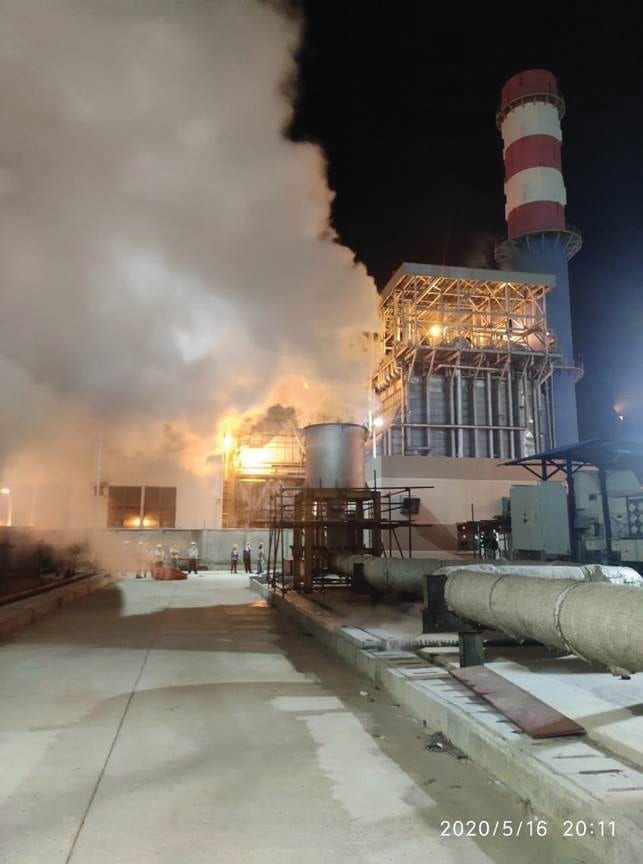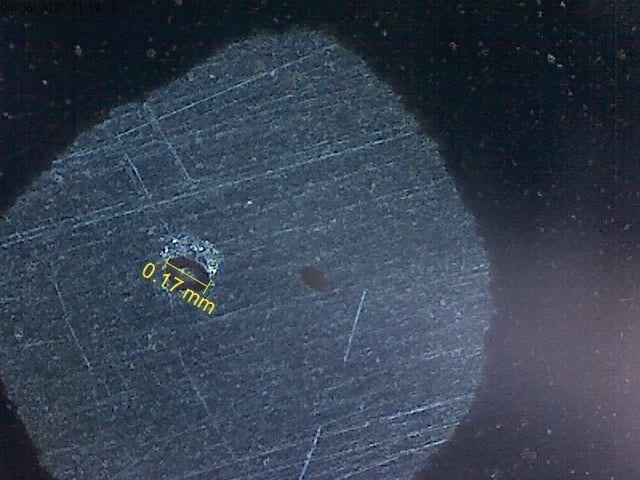Many power projects have been disrupted due to COVID-19. However, managers at Larsen & Toubro Ltd. found a way to complete steam blow requirements in spite of the pandemic, using secure internet connections to operate the gas turbine remotely.
Bibiyana South is a 400-MW gas-based combined cycle power project of the Bangladesh Power Development Board, Ministry of Power, Bangladesh. The project is being executed on an engineering, procurement, and construction (EPC) basis by a joint venture of Samsung C&T Corp. and Larsen & Toubro Ltd. The power plant is located in the Bibiyana district of Sylhet in Bangladesh.
The plant consists of one Siemens SGT5-4000F gas turbine (GT) capable of operating on natural gas; one horizontal, triple-pressure, outdoor, natural recirculation-type heat recovery steam generator (HRSG); and one Siemens SST5-3000 steam turbine generator, arranged in a single shaft configuration.
Larsen & Toubro Ltd. India (L&T), executing the project, successfully achieved a steam blowing milestone on June 11, 2020, amid the COVID-19 situation. This achievement is significant as it was the first time a steam blowing activity was carried out by L&T and the original equipment manufacturer (OEM), with Siemens Energy operating the GT from a remote location.
Leading up to the evolution, L&T and Siemens Energy discussed ways to continue with the commissioning work in spite of the pandemic. Ultimately, the team decided to operate the GT remotely to facilitate steam blowing (Figure 1), because the OEM's technical personnel had returned to their home countries due to coronavirus concerns.
 |
|
1. This image was taken at night with bright lights shining in the background. It shows steam venting out through a silencer during the steam blowing operation at the Bibiyana South project. Courtesy: Larsen & Toubro Ltd. India (L&T) |
Establishing Remote Support
A remote connection was established between the common remote service platform (CRSP) router located at the Bibiyana South site power control center and the physical server located at Erlangen, Germany. Siemens Energy's technical personnel established communication via an end-point call, that is, they built a secure connection with the Bibiyana site through dedicated public internet protocol of 5 megabits per second, using a virtual private network (VPN) connection from Germany. Remote Siemens technical personnel obtained online access to the site through a secure terminal server that gives access to the Siemens application server. The physical server was backed up at three locations–one each in Germany, Singapore, and the U.S.
Additionally, smart glass technology was used to physically check the status of each piece of equipment. The remote Siemens technical team could see all the equipment through the eyes of the L&T engineer wearing the smart glasses at the Bibiyana South site.
Once a remote connection was established, the L&T and Siemens Energy teams ensured all system readiness requirements were met prior to starting the gas turbines. On the day prior to gas turbine startup, a physical remote inspection was conducted for the gas turbine compressor air inlet area, the gas turbine exhaust diffuser, and the gas turbine fuel gas pilot. Stroke checking was done for the premix valve, inlet guide vane (IGV), cooling air valves, blow off valves, and all other equipment pieces. The L&T team conducted the HRSG "ready for hot gas admission" and the "test of trip protection" logic. Tests for physical fitness of all auxiliaries were completed in one day, and the gas turbine, HRSG, and all other systems were declared ready for startup.
Technical Initiatives Expedite Completion
Several new technical initiatives were implemented for early completion of steam blowing activities during the time of COVID-19. They included:
- Implementing a process for continuous steam blow instead of the conventional puff method.
- Temporarily converting the clarified water storage tank (CWST), which has a capacity of 13,600 m3, to function as an additional demineralized (DM) water reserve to facilitate steam blowing continuously.
- Adding provisions that allowed the cooling tower makeup pump, which has a capacity of 610 m3/hr, to transfer DM water from the CWST to the hotwell in order to establish constant makeup at higher flow during blow-off conditions.
- Implementing online DF (disturbance factor/cleaning ratio) monitoring in the plant distributed control system (DCS), in accordance with the DF formula, which required pressure, temperature, and flow conditions during blowout and at maximum rated capacity.
- Optimizing the total number of circuits/stages, resulting in five to clean, which were the high-pressure (HP), low-pressure (LP), intermediate-pressure (IP), hot reheat (HRH), and cold reheat (CRH) circuits, with one common circuit for both HP and HRH.
- Using digital microscopic pictures of each target plate to check Siemens' acceptance criteria for stage completion (Figure 2).
 |
|
2. This image shows a magnified view of target plates after the steam blow, which allows digital microscopic measurements of indentations. Courtesy: L&T |
Risk Mitigation. Certain risks that were anticipated under remote operating conditions were mitigated in consultation with Siemens Energy experts. Examples include:
- Misinterpretations of controls during remote communication.
- Analysis and monitoring vigilantly during fault occurrence.
- Internet connectivity and internet speed/gateway issues.
- Daily readiness before plant startup for close coordination for open cycle and combined cycle mode of GT operation.
Achievement. On May 17, 2020, the GT was synchronized with the grid. Hot gas was admitted to the HRSG and steam blowing started the next day. Steam blowing was undertaken in the following four stages:
- Stage 1. A 4-hour service blow was conducted on May 18 through the HP-HP blow path upstream and downstream circuit, and the IP-LP circuit.
- Stage 2. An 8-hour service blow was conducted between May 19 and May 20 through the HP-HP blow path upstream and downstream-CRH circuit, and the IP-LP blow path upstream and downstream circuit.
- Stage 3. A 24-hour and 5-minute target blow was conducted between June 2 and June 9 through the HP-CRH + IP-HRH circuits.
- Stage 4. A 9-hour and 15-minute service blow was conducted between June 10 and June 11 through the HP-CRH + IP-HRH-IP blow path circuit.
On June 6, 2020, for Stage 3 target blow acceptance, digital microscopic pictures of the target plates were sent to Siemens Energy's design and process team for approval. Acceptance was received on June 9, 2020. ■
–Arvind Kumar Singh is project director for the Bibiyana South 400-MW combined cycle power project.
